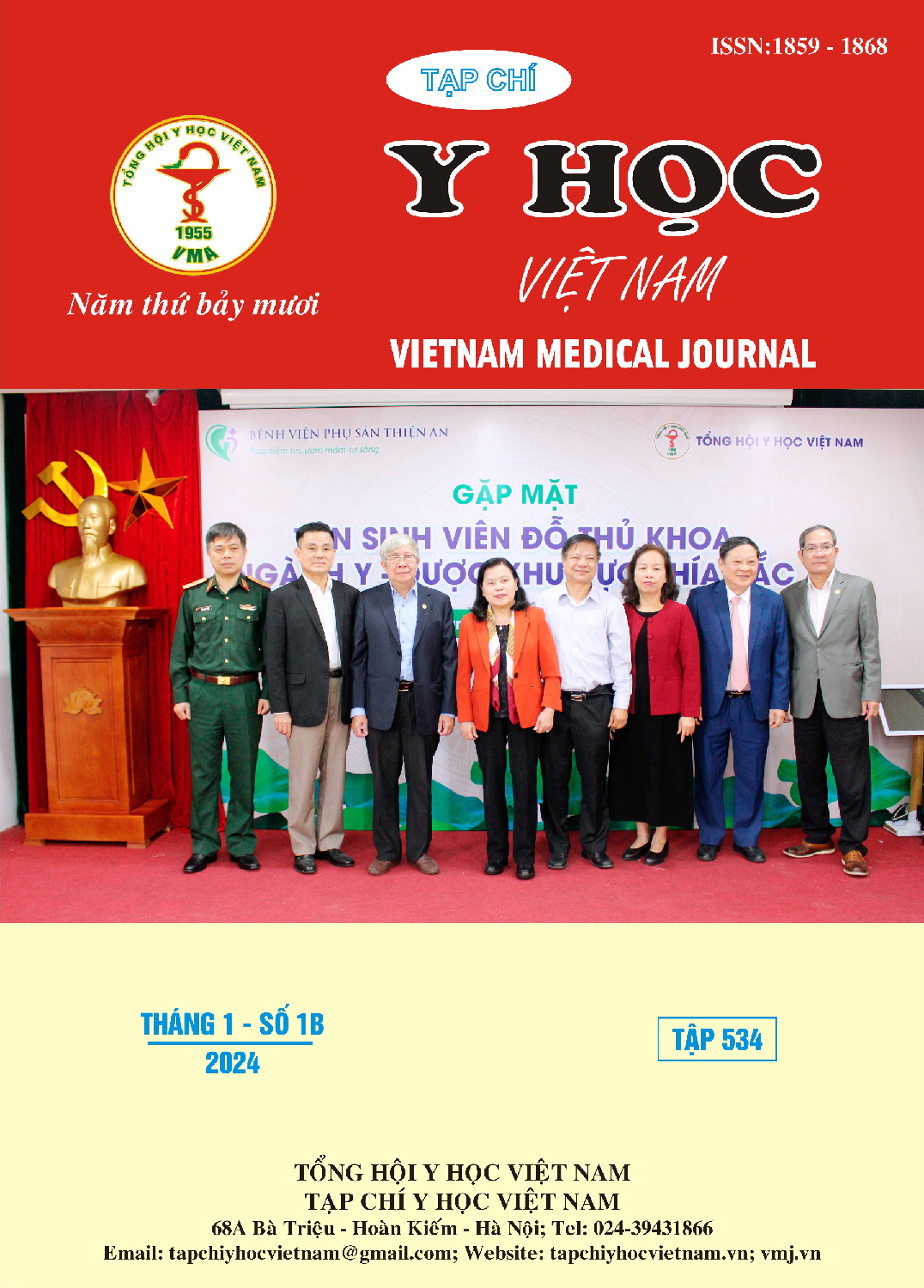ĐÁNH GIÁ KẾT QUẢ PHẪU THUẬT GHÉP DA TỰ THÂN ĐIỀU TRỊ VẾT THƯƠNG MẤT DA VÀ BỎNG SÂU Ổ TRẺ EM TẠI BỆNH VIỆN NHI ĐỒNG THÀNH PHỐ
Nội dung chính của bài viết
Tóm tắt
Đặt vấn đề: Tại khoa Ngoại tổng hợp bệnh viện Nhi đồng Thành Phố bệnh nhi bỏng chiếm tỷ lệ khoảng từ 1/4 đến 1/5 số bệnh nhân trong khoa. Phẫu thuật ghép da điều trị bỏng trẻ em là kỹ thuật thực hiện thường quy. Tuy nhiên chưa có nghiên cứu tổng kết đánh giá nào về kỹ thuật này tại bệnh viện. Vì vậy chúng tôi tiến hành nghiên cứu đề tài: “Đánh giá kết quả phẫu thuật ghép da tự thân điều trị vết thương mất da và bỏng sâu ở trẻ em tại Bệnh Viện Nhi đồng Thành Phố”. Đối tượng và phương pháp nghiên cứu: Đây là một nghiên cứu tiền cứu mô tả loạt ca lâm sàng được thực hiện từ tháng 6 năm 2023 tới tháng 12 năm 2023. Tổng cộng 35 bệnh nhi, gồm 18 (51.4%) bé trai và 17 (48.6%) bé gái từ 1-15 tuổi đã được tiến hành ghép da vì bỏng hoặc vết thương tại BV Nhi đồng Thành Phố. Trong số này, 13 ca phải ghép da sau bỏng, 22 ca vết thương khuyết da (bao gồm 2 ca là do thoát mạch sau điều trị nội khoa). Tất cả đều được lên phẫu thuật chương trình. Diện tích khuyết da ban đầu có sự chênh lệch khá lớn giữa các ca, đặc biệt khuyết da do vết thương lớn hơn đáng kể so với bỏng. Sau ca mổ, bệnh nhân được theo dõi khoảng 1 tuần để đánh giá tình trạng lành vết thương, sau đó bệnh nhân tiếp tục được theo dõi mỗi 1 tháng, 3 tháng và 6 tháng để đánh giá kết quả xa. Kết quả: Số lượng bệnh nhân có mảnh da ghép sống bám vào nền vết thương tốt chiếm tỷ lệ cao trong cả hai trường hợp, đạt tổng số 85.17%. Có 3 trường hợp chỉ bám một phần với diện tích sống bám <70%, chiếm tỉ lệ 8.57%. Tổng cộng 33 bệnh nhân (94.29%) đạt mức vận động tốt sau phẫu thuật. Không có bệnh nhân nào có mức phục hồi vận động kém hậu phẫu. Kết luận: Với các vết thương mất da và bỏng sâu: Kỹ thuật cắt bỏ hoại tử sớm và che phủ vết thương ngay sau phẫu thuật bằng da tự thân hoặc các vật liệu che phủ tạm có thể cứu sống, cải thiện chất lượng cuộc sống bệnh nhân.
Chi tiết bài viết
Tài liệu tham khảo
2. Hồ Thị Xuân Hương (2018). “Bỏng ở trẻ em”, Giáo trình bỏng, tr.479
3. Nguyễn Gia Tiến (2018). “Diện tích và độ sâu tổn thương bỏng”,Giáo trình bỏng tr. 91
4. Đặng Tất Hùng (1997), “Một số lợi ích của ghép da mảnh dày diện lớn kiểu Wolfe- Krause trong phẫu thuật tạo hình”, Thông tin bỏng, số 3, tr. 40-42.
5. Đặng Tất Hùng, Nguyễn Minh Tâm (1997), “Nẹp cố định sau phẫu thuật điều trị sẹo dính và co kéo ở bệnh nhân di chứng bỏng”, Thông tin Bỏng, số 1, tr. 10 - 11.
6. Trần Thiết Sơn (2014), “Ghép da”, Các vấn đề cơ bản trong phẫu thuật tạo hình thẩm mỹ, Nhà xuất bản y học, Hà Nội, tr.72-76.
7. Lương Quang Anh (2013). “Phòng chống bỏng trẻ em” Tạp chí y học thảm họa và Bỏng, số 1, tr. 95-98.
8. Nguyễn Thị Thu Hằng (2017). “Thực trạng và một số yếu tố liên quan đến bỏng trẻ em dưới 16 tuổi tại viện Bỏng Quốc Gia năm 2017” Tạp chí y học thảm họa và Bỏng, số 5 tr. 147-151.
9. Đỗ Lương Tuấn (2013). “Nhận xét đặc điểm vết thương mất da diện rộng do tai nạn giao thông, tai nạn lao động có chỉ định ghép da tự thân mảnh mỏng” Tạp chí Y học thảm họa và bỏng số 5- 2014, pp. 32-51.


